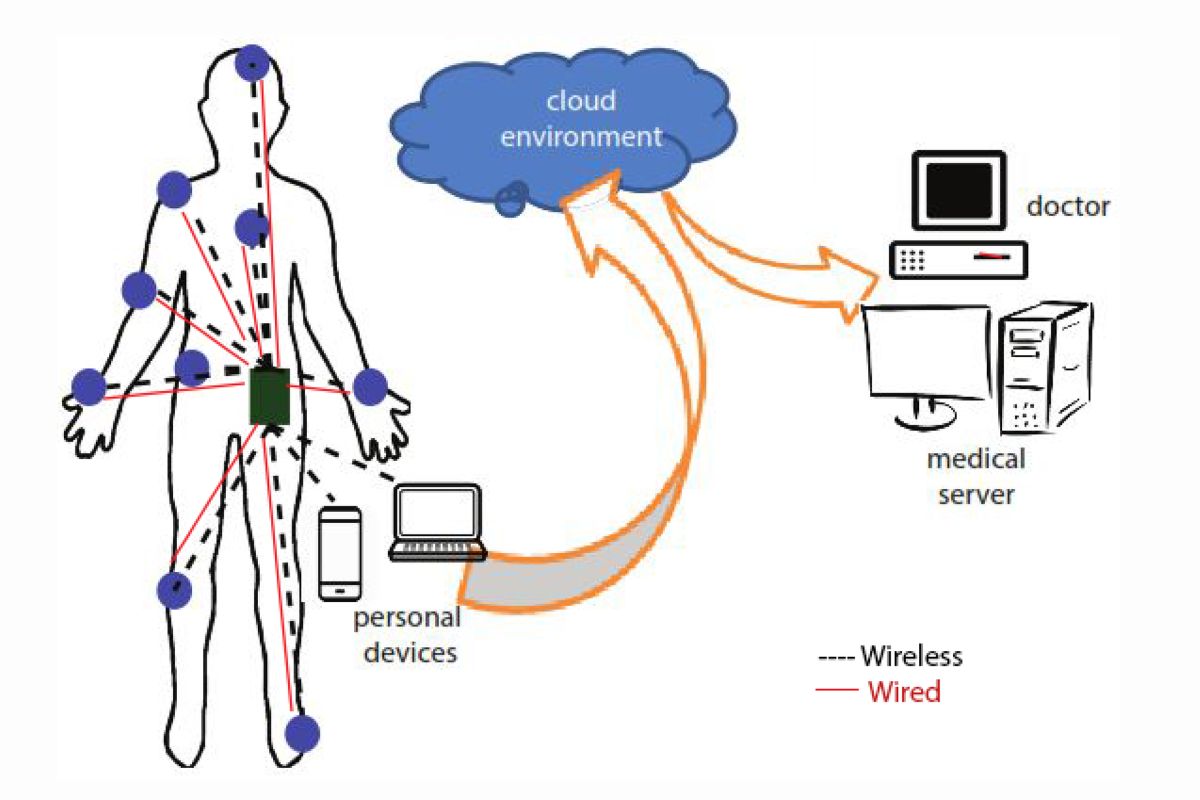
Wireless body sensor networks (WBSNs) are transforming healthcare by enabling continuous health monitoring. These networks consist of tiny, wearable sensors that collect data on vital signs like heart rate, temperature, and blood pressure. WBSNs offer real-time health insights, which can be crucial for early diagnosis and treatment. They are particularly beneficial for patients with chronic conditions, athletes, and the elderly. WBSNs can also enhance patient mobility and comfort by reducing the need for frequent hospital visits. However, challenges like data security, battery life, and sensor accuracy need addressing. Despite these hurdles, the potential benefits of WBSNs make them a promising technology in modern healthcare.
What is a Wireless Body Sensor Network?
Wireless Body Sensor Networks (WBSNs) are systems of interconnected sensors placed on or inside the human body. These sensors monitor various physiological parameters and wirelessly transmit data to a central device for analysis.
-
WBSNs are used in healthcare to monitor vital signs like heart rate, blood pressure, and body temperature.
-
These networks can help detect early signs of medical conditions, enabling timely intervention.
-
WBSNs are also used in sports to track athletes' performance and physical condition.
-
They can be integrated with smartphones and other devices for real-time monitoring and alerts.
-
WBSNs often use Bluetooth or Wi-Fi for data transmission, ensuring seamless connectivity.
How Do Wireless Body Sensor Networks Work?
Understanding the mechanics behind WBSNs can help appreciate their complexity and utility. Here's a breakdown of how they function.
-
Sensors are placed on the body to collect data on various physiological parameters.
-
Data is transmitted wirelessly to a central device, such as a smartphone or computer.
-
The central device processes the data and provides real-time feedback or stores it for later analysis.
-
Some WBSNs use cloud storage for data, allowing remote access by healthcare providers.
-
Advanced algorithms analyze the data to detect abnormalities or trends.
Applications of Wireless Body Sensor Networks
WBSNs have a wide range of applications beyond just healthcare. Here are some fascinating uses.
-
In elderly care, WBSNs can monitor daily activities and detect falls, sending alerts to caregivers.
-
They are used in rehabilitation to track progress and ensure exercises are performed correctly.
-
WBSNs can monitor glucose levels in diabetic patients, providing real-time alerts for abnormal levels.
-
In military settings, they monitor soldiers' health and stress levels in real-time.
-
They are used in sleep studies to monitor sleep patterns and detect disorders like sleep apnea.
Benefits of Wireless Body Sensor Networks
The advantages of WBSNs are numerous, making them invaluable in various fields. Here are some key benefits.
-
They provide continuous, real-time monitoring, which is crucial for early detection of medical issues.
-
WBSNs reduce the need for frequent hospital visits, saving time and resources.
-
They offer personalized healthcare by tailoring monitoring and treatment to individual needs.
-
WBSNs improve patient compliance by providing easy-to-use, non-invasive monitoring solutions.
-
They enhance the quality of life for patients by enabling independent living with constant health monitoring.
Challenges and Limitations of Wireless Body Sensor Networks
Despite their many benefits, WBSNs face several challenges that need addressing for widespread adoption.
-
Data security and privacy are major concerns, as sensitive health information is transmitted wirelessly.
-
Battery life of sensors can be limited, requiring frequent recharging or replacement.
-
Interference from other wireless devices can affect the accuracy and reliability of data transmission.
-
High costs of WBSNs can be a barrier for widespread use, especially in low-income settings.
-
Integration with existing healthcare systems can be complex and require significant investment.
Future of Wireless Body Sensor Networks
The future of WBSNs looks promising with ongoing advancements in technology. Here are some trends to watch.
-
Development of smaller, more efficient sensors will make WBSNs more comfortable and less intrusive.
-
Advances in battery technology will extend the life of sensors, reducing the need for frequent maintenance.
-
Improved data encryption methods will enhance the security and privacy of transmitted data.
-
Integration with artificial intelligence will enable more accurate and predictive health monitoring.
The Future of Wireless Body Sensor Networks
Wireless body sensor networks (WBSNs) are changing healthcare. These tiny devices monitor vital signs, track physical activity, and even detect early signs of diseases. They offer real-time data, which helps doctors make quick decisions. Patients benefit from continuous monitoring without being tied to a hospital bed.
WBSNs are also making waves in sports and fitness. Athletes use them to optimize performance, prevent injuries, and recover faster. The data collected helps coaches and trainers create personalized training plans.
Security and privacy are concerns, but advancements in encryption and data protection are addressing these issues. As technology evolves, WBSNs will become even more reliable and secure.
In short, WBSNs are a game-changer. They improve healthcare, enhance athletic performance, and offer peace of mind. The future looks bright for this innovative technology.
Was this page helpful?
Our commitment to delivering trustworthy and engaging content is at the heart of what we do. Each fact on our site is contributed by real users like you, bringing a wealth of diverse insights and information. To ensure the highest standards of accuracy and reliability, our dedicated editors meticulously review each submission. This process guarantees that the facts we share are not only fascinating but also credible. Trust in our commitment to quality and authenticity as you explore and learn with us.
